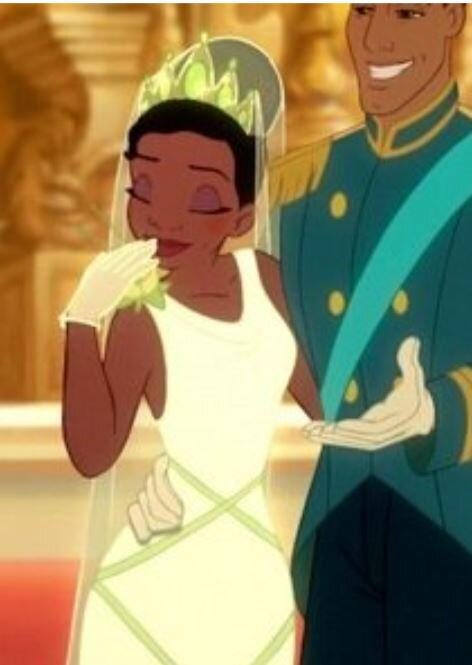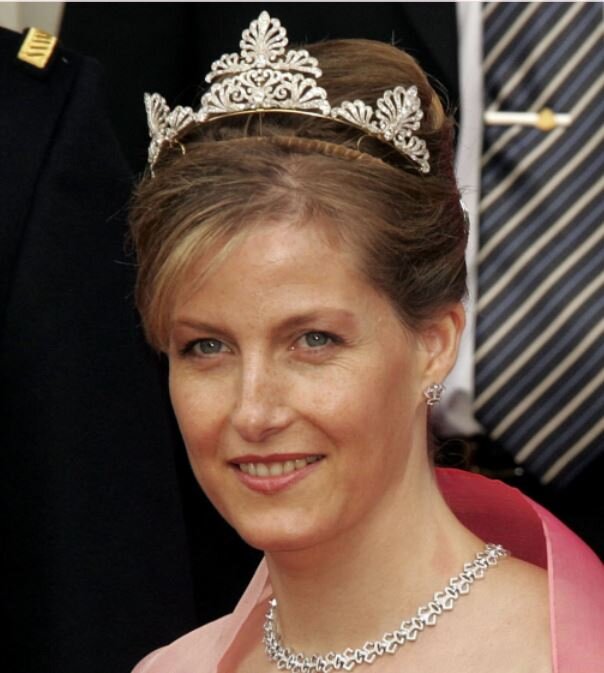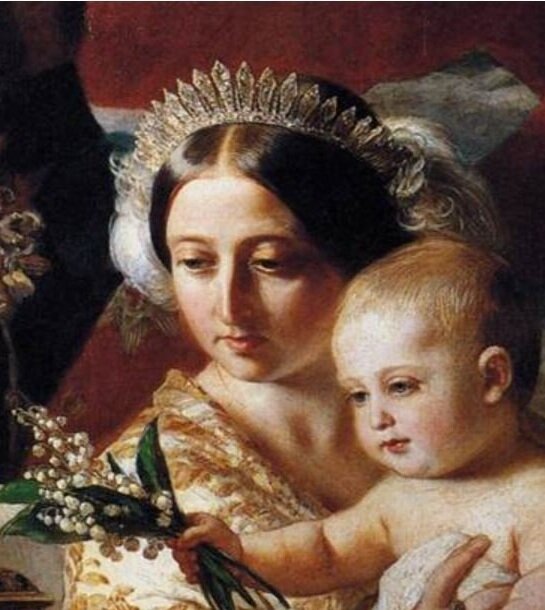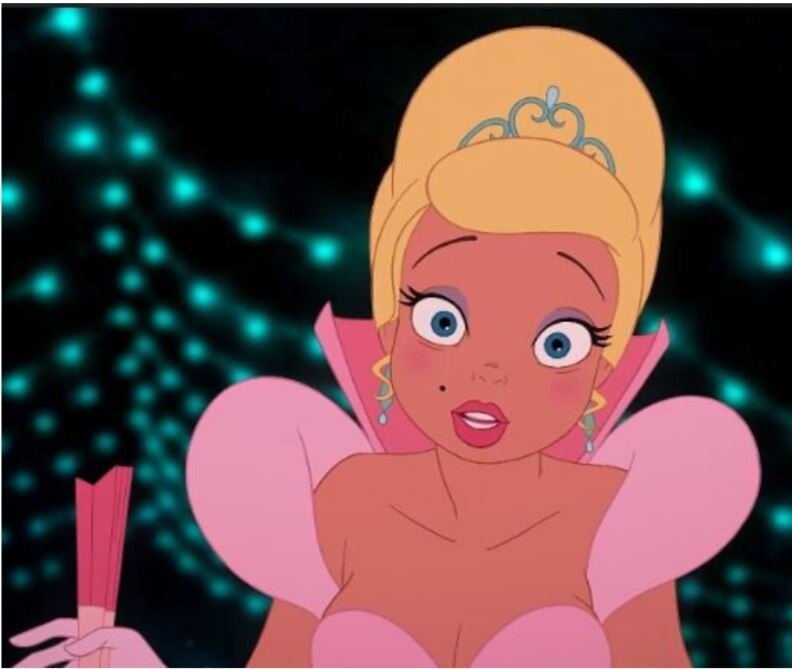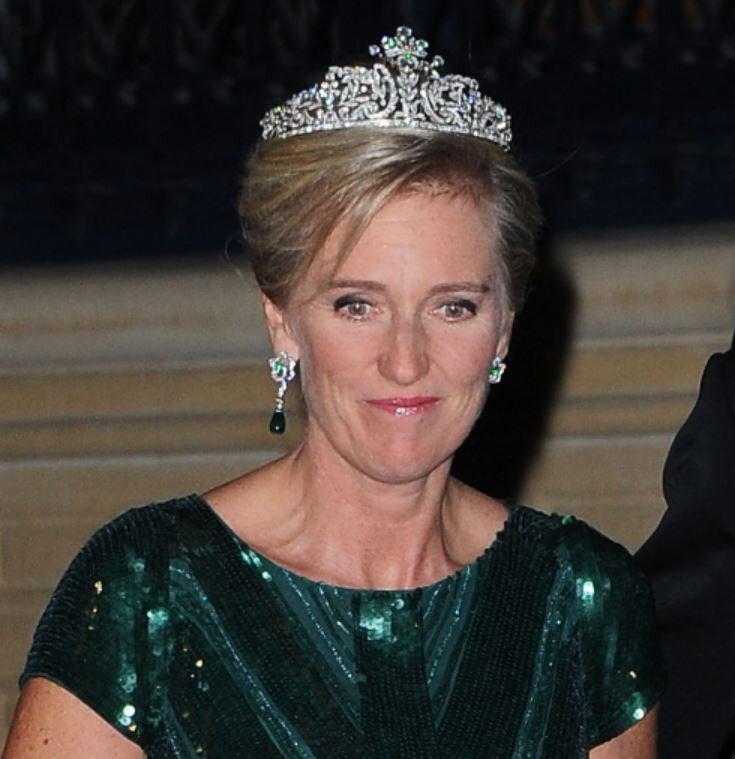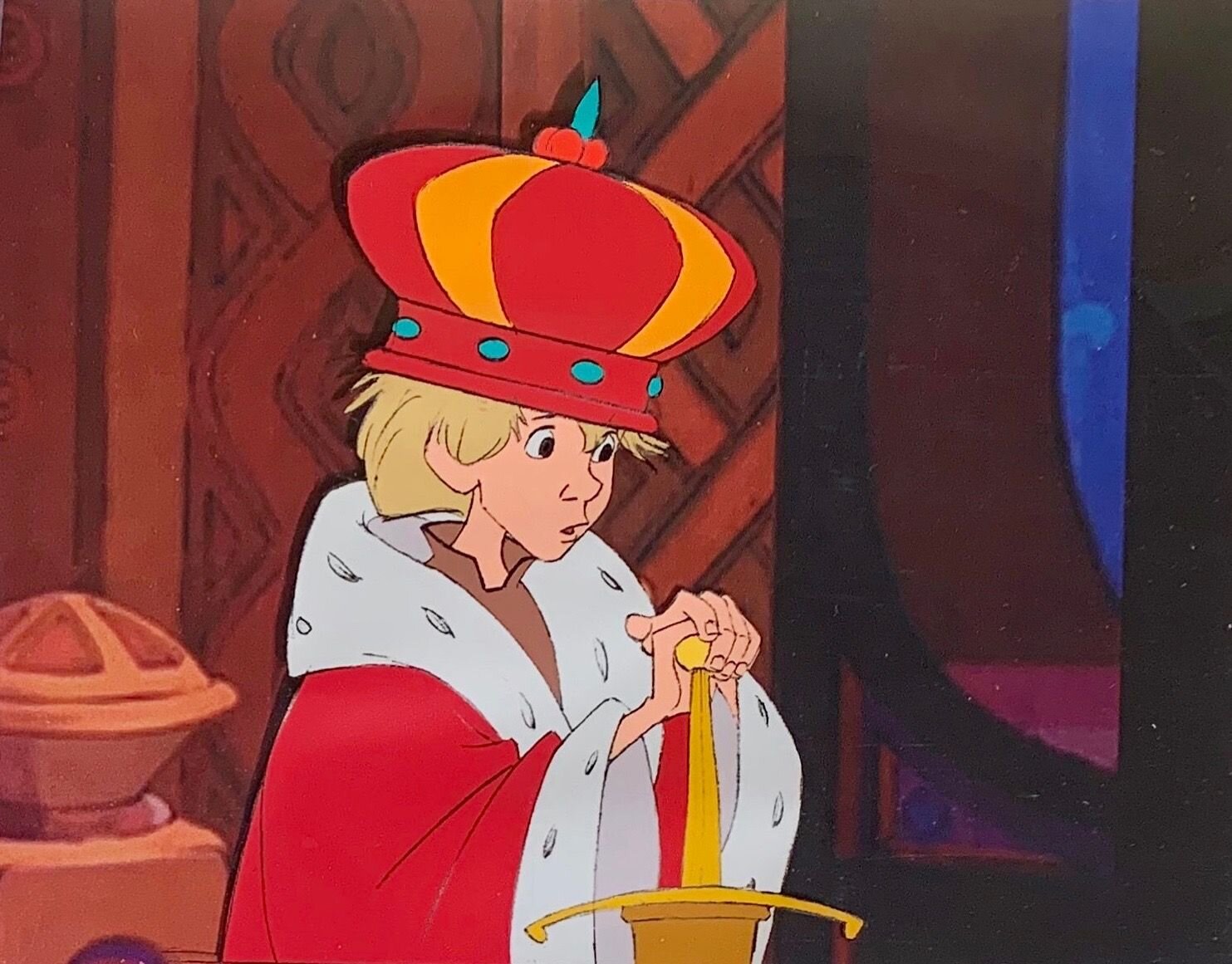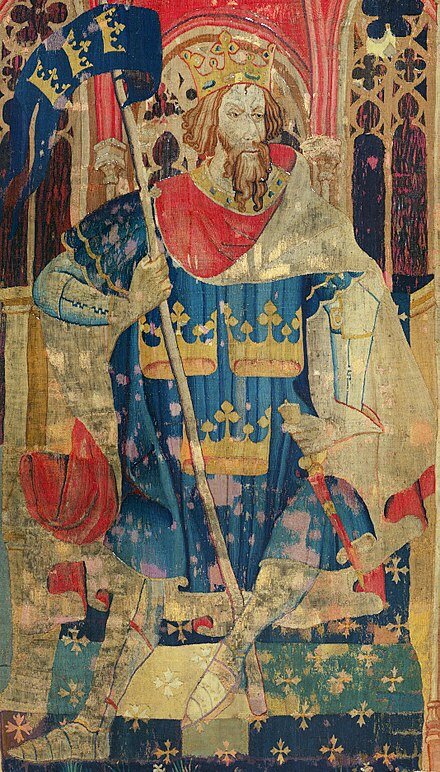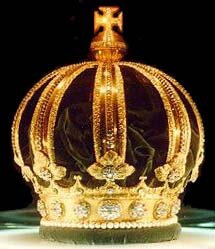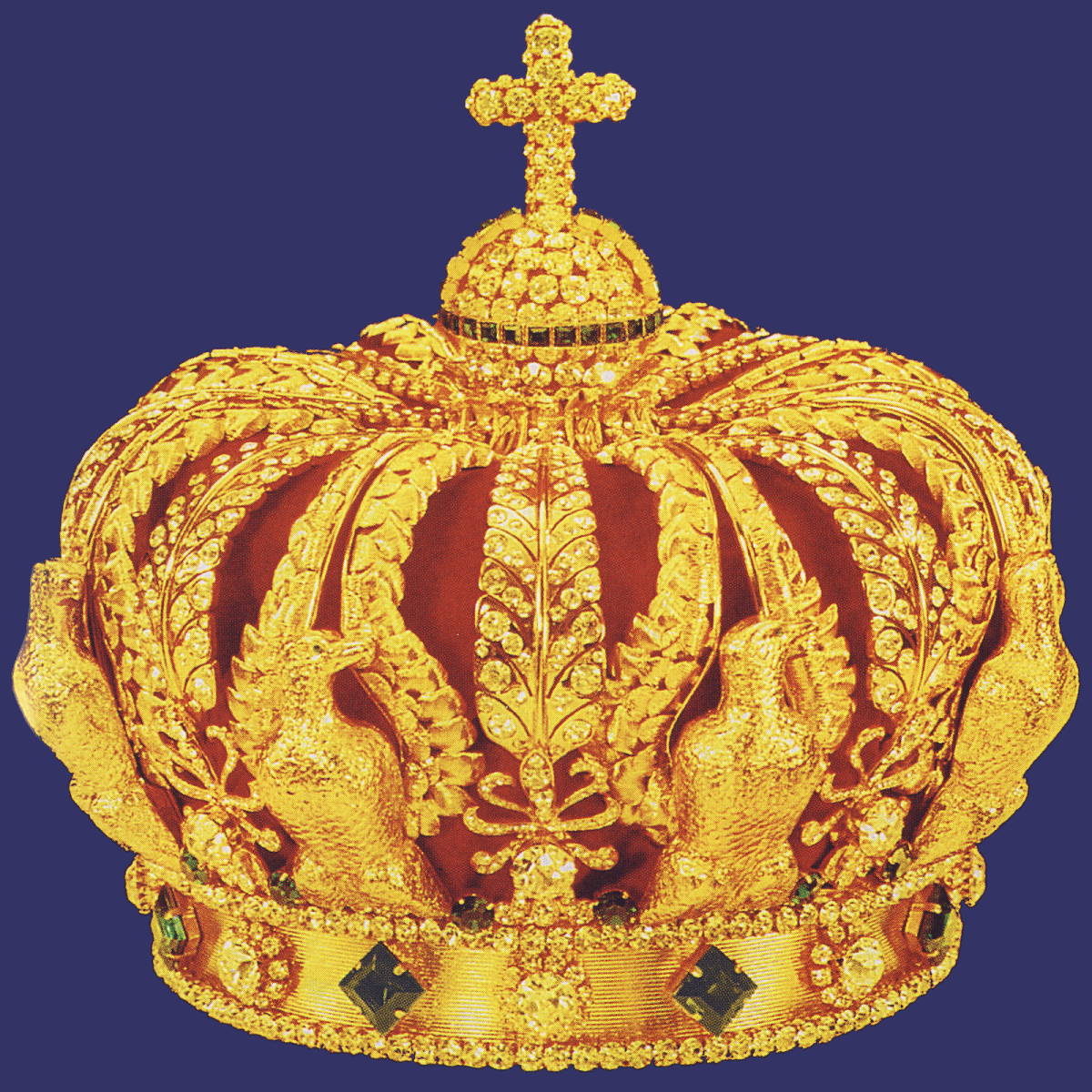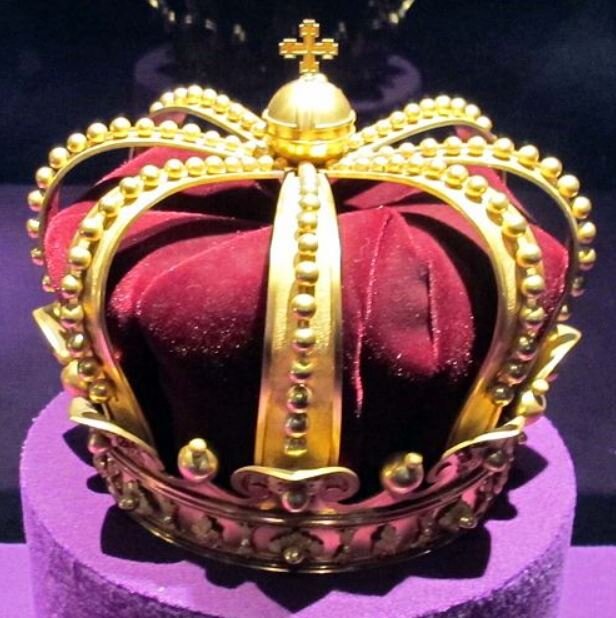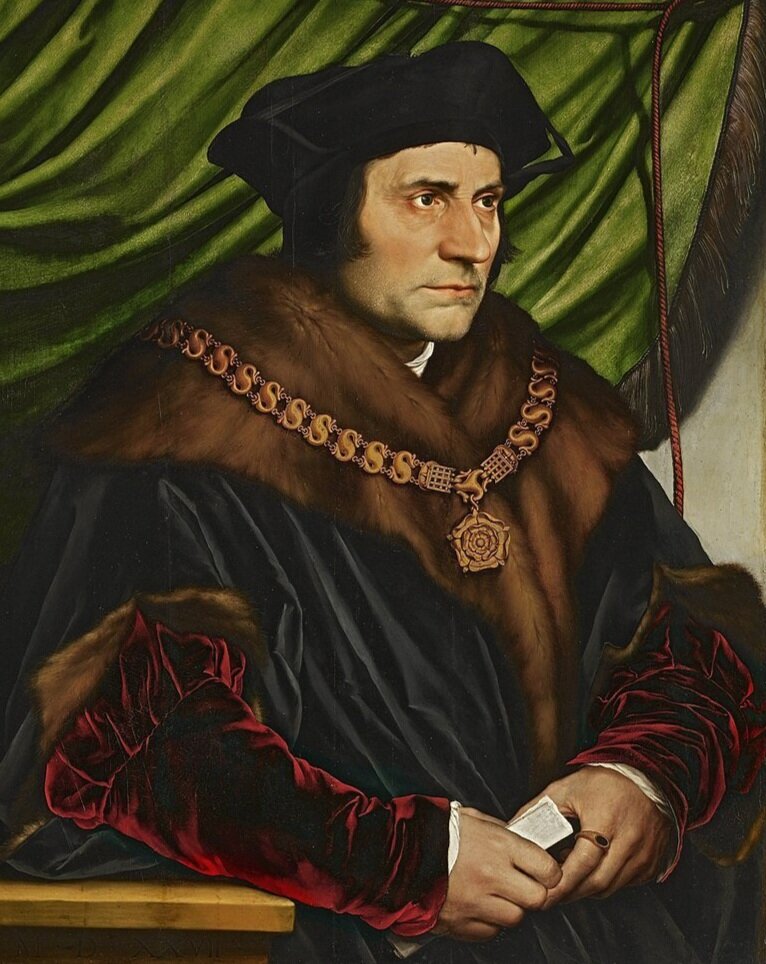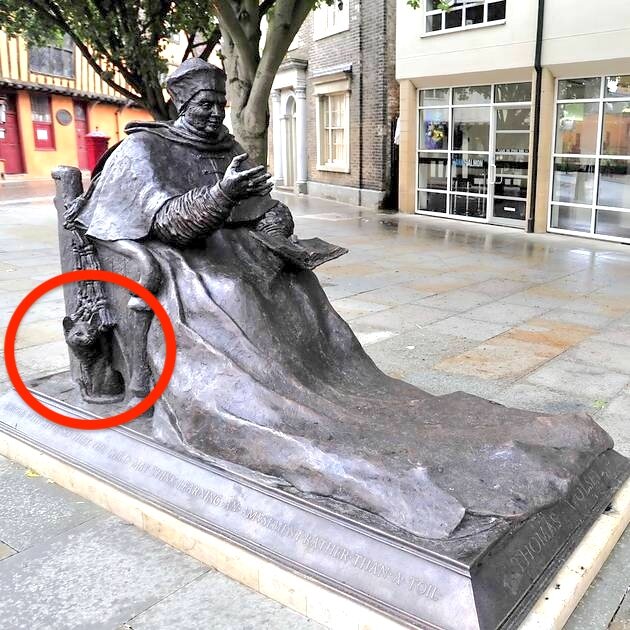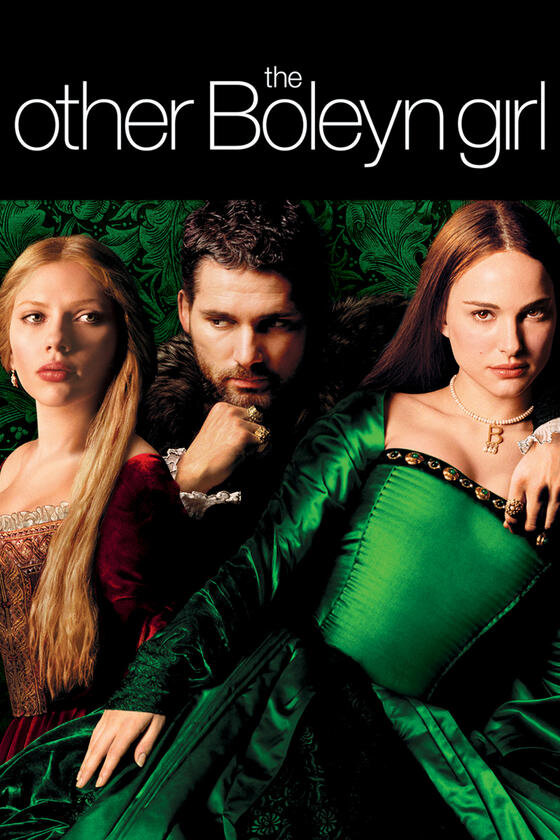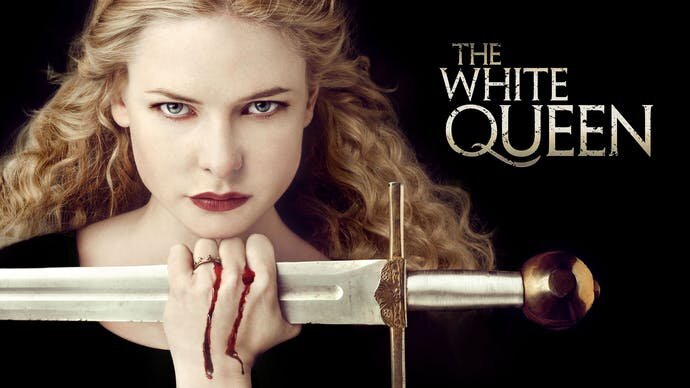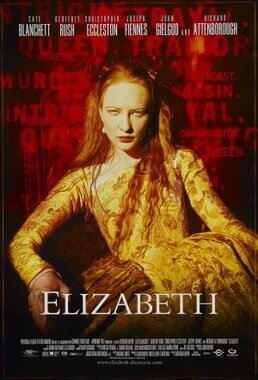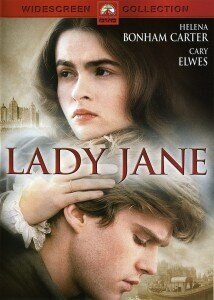Over-Analyzing The Crown: S4E1 Gold Stick
All My Posts on The Crown
S3: 1 & 2: “Olding” & “Margaretology” 3: “Aberfan” 4: “Bubbikins, 5: “Coup” 6: “Tywysog Cymru” 7: “Moondust" 8: “Dangling Man” 9: “Imbroglio” 10: “Cri de Coeur”
S4: 1: “Gold Stick” 2: “The Balmoral Test” 3: “Fairytale” ( + Cinderella References) 4: “Favourites” 5: “Fagan” 6: “Terra Nullius” 7: ”The Hereditary Principle” 8: “48:1” 9: “Avalanche”
The Medals, Sashes, and Tiaras of The Crown; Tiaras/Crowns Overviews: Season 1 ; Season 2
Since I had great fun over-analyzing every episode of Season 3 of The Crown last year, I’m doing the same thing this year! I’ll be /trying/ to write these posts up one episode at a time (although I may watch ahead a bit of my writing), so there won’t be spoilers for any episode except that which I’m covering in the post. So if you haven’t watched Season 4 Episode 1 of the Crown yet and don’t want to be spoiled, please stop reading now. :)
Screenshot from The Crown, Netflix
Olivia Colman as The Queen in the Trooping the Colour on The Crown vs. Real life Queen in the Trooping the Colour (Credit: Tim Graham / Getty).
So let’s jump right into it, shall we? I’m going to assume if you’re reading this, you’re caught up on who all the main characters are and what’s happened previously in The Crown.
Lord Mountbatten and his gold stick (Credit: Allan Warren).
“Gold Stick” starts off with the Trooping the Colour, an annual ceremony performed by the British and Commonwealth infantry regiments that also marks the official birthday of the British sovereign (which currently is in June). The queen rides out with the infantry (on horseback until the late 80s, which she switched to riding in a carriage), and then inspects her troops; much of the troops march past the queen and salute her. (There’s a LOT more to this ceremony, but as I don’t know much about British military traditions or terminology, I’m keeping it super simple). (Sidenote: my now-husband and I ended up in London on the official birthday of the British sovereign on accident back in 2013, and I’m pretty sure we saw a bit of the Trooping the Colour ceremony without having any idea of what we were looking at! My royals obsession developed many years later, lol).
In this opening scene, we’ve got the Queen, Prince Philip, Prince Charles, and Lord Mountbatten all on horseback in the ceremony. This feels just like a fancy way of starting the season off initially, but the significance of this scene becomes more apparent over the episode.First, the name of this episode is “Gold Stick,” which refers to both a ceremonial bodyguard office (the office of Gold Stick in Waiting) and the actual gold stick held by the person in that office. Those in this office attend all state occasions and rides at the sovereign’s side. Lord Mountbatten was appointed Gold Stick in Waiting in 1965 and I believe, served in that role until his death in 1979. I can’t find a list of office holders anywhere, but the Princess Royal, Anne, has apparently served in that position since 1999.
Because this episode ends up being quite significantly about Lord Mountbatten’s death, it’s quite fitting that the episode starts with him formally serving in his role as Gold Stick in Waiting at the queen’s side. The Gold Stick itself is laid on top of Mountbatten’s coffin at his funeral, along with his ceremonial sword and admiral’s hat.Second, the Trooping the Colour Ceremony was the site of a….sort of assassination attempt on Elizabeth II in 1981. A 17-year-old fired six shots during the ceremony, but it was quickly revealed that they were blanks. It was still a pretty significant event and given the foreboding air of the Season 4 trailers and the centrality of the Trooping the Colour shots in all the promotion, I honestly somewhat expected to see that event in this season. Even if they don’t end up showing that incident though, placing a trooping the colour ceremony at the beginning of an episode all about the assassination of a member of the British royal family is a pretty subtle but distinct reference to it, particularly since the ceremony in the show has IRA propaganda audio playing throughout.
I want someone to look at me the way Queen Elizabeth II looks at horses. Someone tell my husband this (Credit: Samir Hussein / Getty).
There’s a lovely little tiny scene before the ceremony is even shown that just shows the Queen fondly interacting with her horse. As was established in Season 3 (in the Lord Mountbatten focused episode of that season, actually!), the Queen legitimately LOVES horses. Just so much. Here’s a photo showing how much she loves horses. Look at that love. <3
ADDED 11/18 (I promised I’d research Charles’ love live, and I have! Here ya go!): After The Trooping the Colours, the royal family gathers for a light meal and gossip about Charles. They quickly discuss several women that Charles has been dating, but don’t really get into the details of who any of them were, referring to them instead in a kind of shorthand. I was able to figure out who most of them were, but not who “Westmorland” or “a Borgia” referred to. Please help me if you know!
I’m happy to share the information about these women here, but I feel uncomfortable sharing paparazzi photos of women who were mostly only very briefly connected to the prince over forty years ago, as it feels just….very male gaze-y. You can easily google photos of these women if you like though.Westmorland Girl – no idea who this is referring to.
A Guinness – Sabrina Guinness, from the brewing family. She later went on to date Mick Jagger and David Bowie. She did not marry until 2014, when she married playwright Sir Tom Stoppard.
Girl in a bathing costume – This may be referring to model Jane Priest, who was pictured with Charles, both wearing bathing suits, in Australia in 1979. She kissed him on the cheek at the beach in a picture where he looks adorably confused. She claimed later that her hanging out on the beach was actually a PR thing to make the prince appear less stuffy and more relatable.
Longman – Caroline Longman – her mother Lady Elizabeth Lambert was one of the bridesmaids at the Queens’ wedding in 1947.
“Whip?” “Whiplash” – referring to Anna Wallace, the daughter of a Scottish landowner with a notoriously firey temper. She dumped him after he ignored her at not one, but two formal events he invited her to – the Queen Mother’s 80th birthday party and some sort of polo party. Charles supposedly proposed to her twice. He actually dated her in 1980, right before dating Diana.
A Borgia! – no idea.
Sarah Spencer – Diana’s older sister. They dated briefly in 1977 until she talked about their relationship in the press in a negative light, saying she wouldn’t marry Charles “if he were the dustman of the King of England.”
A few other important women Charles dated:
Amanda Knatchbull – Lord Mountbatten’s granddaughter (remember, he was Charles’s great-uncle, so although he was related to Amanda, it was a distant relation). They bonded after Dickie and Amanda’s little brother were killed in the IRA attack. Charles apparently proposed to her in 1980 but she didn’t accept. They saw each other frequently between 1974 and 1979. Dickie apparently really did push for their relationship in his life. She went on to work as a social worker and married someone else and is apparently quite happy out of the limelight.
Jane Wellesley – Daughter of the 8th Duke of Wellington, was considered a leading contender for Charles’ wife for a while. Dated in 1973-1974 and then broke up, possibly due to intense media scrutiny. Famously said: “Do you honestly believe I want to be queen?”
Davina Sheffield – The granddaughter of 1st Lord McGowan, linked to Charles in 1976. Her former boyfriend talked to the press about their relationship and ruined her “virginal” reputation, pretty much putting a stop to their relationship.
Costuming note: At the post-trooping the colors family dinner, every woman at the table is wearing a floral print - the Queen, Princess Anne, the Queen Mother, and Princess Margaret. Sarah Spencer is also in florals when Charles arrives at her house. And then you have Diana appear, dressed as a literal woodland fairy. Floral prints were EVERYWHERE in the 1970s, but I like that it seems to foreshadow Diana’s entrance anyway.
Added 11/18: The fact that Diana meets Charles while dressed like a woodland fairy and they discuss A Midsummer Night’s Dream upon their first meeting foreshadows all the descriptions of their love story as a fairy tale. In real life, Diana said that she met Prince Charles out in a field while her family was hunting with him.
Diana tells Charles that she’s trying to stay out of the way and not be seen, but Sarah later said that Diana was obsessed with meeting Charles. Charles promises Diana not to tell her sister that he’d seen her, but then immediately tells Sarah about their meeting. This sets a precedent for Diana’s life - which was filled with lots of contradictory stories from her point of view vs. Charles and Camilla’s points of view.
As Charles rides away with Sarah, Diana sits in the window sill very gracefully and watches him ride away, pointing to her ballet training.
According to Diana: Her True Story in Her Own Words, Diana enjoyed dancing in the front hall of Althorpe Hall surrounded by portraits of her ancestors, where she’s shown meeting Charles in this episode.Timing Notes: I have a theory that Season 4 picked up only a few days after Season 3 left off, but then jumped two years between the opening Trooping the Colours/Charles meeting Diana scenes and the election of Margaret Thatcher.
Evidence: Season 3 ended with The Queen’s Silver Jubilee, which occurred in June 1977, with a big procession and Service of Thanksgiving on June 7, 1977. Although the date of the Trooping the Colour ceremony isn’t specifically stated, we know the ceremony occurs on the second Saturday of each June. Immediately after this scene in the show, Prince Charles drives off to hang out with Sarah Spencer (who he’s currently dating) and meets Diana for the first time. We know that historically, Charles dated Sarah IN 1977, and met Diana that same year (when Diana was 16). And Margaret Thatcher was elected prime minister in Mary 1979. ADDED 11/18: On a later watch, I noticed that some of the Ireland protest scenes in the Trooping the Colours scene featured signs stating that the queen had been on the throne from 1952-1977 - indicating further that the pre-credits sequence took place in 1977.
You MAY ASK - well, but what about all those girls Charles supposedly dated - that his family was discussing immediately after the Trooping the Colour? Although Season 3 made it look like the Silver Jubilee was celebrated pretty shortly after Camilla Shand married Andrew Parker-Bowles, in real life, Camilla’s wedding occurred in 1973. Charles has definitely had many years to date whoever he wants.
Anyway, it may not matter to anyone else, but I’m very much enjoying this theory of mine and am sticking by with it.They pinned down Thatcher’s look SO EXACTLY. Check out the side by side of Gillian Anderson as Thatcher and real life Thatcher.
When Margaret Thatcher meets the queen, she curtsies in a very elaborate way. The Queen’s eyes get slightly wider at the sight. This apparently was a known quirk of Thatcher’s.
Screenshot from The Crown, Netflix
When the Queen meets Thatcher, they’re wearing almost exactly the same outfit, as they both sport colorful skirt suits with floral pussy bow blouses and sensible heels. Elizabeth is in light purple with a floral blouse, Margaret is in bright blue with a light blue and white blouse. Margaret Thatcher DID indeed wear skirt suits and pussy bow blouses constantly, and the Queen wore pussy bow blouses a few times in the 70s. I’m wondering if they took advantage of the common historical fashion similarities between the characters as a jumping off point to indicate how much in common they really have - a point which Elizabeth made to Philip in an earlier scene, as she was watching the election returns, and which Margaret made in a later scene, to her own husband. Their similarities are also highlighted by the fact that first Prince Philip, and then Denis Thatcher, make somewhat derogatory jokes about two middle-aged women holding the two highest offices in the country.
Thatcher says to the queen: "I find women in general are not suited to high office. ...I find they are too emotional." There’s no evidence that said nothing of the sort in real life, but she wasn’t exactly an ardent supporter of women in high office. She was prime minister for over a decade but only every appointed one woman to cabinet and one woman as the vice chair of the Conservative party.
Gillian Anderson as Margaret Thatcher on The Crown vs. Margaret Thatcher in Real Life (Credit: Keystone / Getty).
The Queen sporting various pussy bow blouses.
The one odd note about the scene in which they meet is that the costume notably made the queen look a bit frumpy? Is this to indicate the slight nervousness she was showing before Thatcher walked in the room, messing with the flowers in front of her and all that? They made her look wider at the waist, although lots of photos from the late 70s early 80s show that the Queen was absolutely not that wide then and maybe not even now.
I have no idea if the Queen actually likes to guess the cabinet members before they’re picked (I haven’t found any evidence of that, and given how confidential her conversations are with her prime ministers, we’d really have no way of knowing) but that was a fantastic scene.
Later, on the way to Balmoral, we see Princess Anne arguing in a car with a man we’ve never seen before, who later is revealed in conversation with her father to be her husband, Mark Phillips. They discuss Anne potentially withdrawing from show jumping, and it’s implied that this is partly to get away from her husband, although she doesn’t really elaborate on their marriage issues.
Anne really was and is a brilliant equestrian and competed in the 1976 Olympic Games in Montreal as a member of the British team, riding the Queen’s horse, Goodwill (This is also the name of the horse she rides in the show jumping scene later in the episode). Anne actually met her husband at an equestrian party. Mark was on the Olympic equestrian teams in 1972 and 1988 and was a reserve team member in 1968.
They didn’t show Anne’s wedding or kidnapping attempt sadly, but at the time of the first episode of season 4, Anne would have been married to mark Phillips for almost 6 years. They would have had a 2 year old son by this first episode as well.
The scene showing prince Phillip talking with princess anne – do those actors ACTUALLY look that much alike or did the show do something to their noses to make them look more similar? It’s insane.
In this scene, Anne says she’s been on her backside most of the year, instead of on a horse, and says something cryptic about having “a case of the horrors on a horse.” Being on her backside may have been a reference to her having children. I don’t know why she would be afraid of riding though? She did have a pretty bad fall from a horse in the 80s, but this happens chronologically before that. I’ll do more research on this and see if I can find an answer.
We see a scene of Lord Mountbatten talking to Prince Charles on the phone, discussing his continuing relationship with Camilla. I don’t believe there’s any evidence of Charles having an affair with Camilla at this time actually, although they were certainly friends during her marriage to Andrew. Charles actually was godfather to her son Tom, born in 1974. Charles’ authorized biography indicates that he began an affair with Camilla in 1986 though, several years into his marriage to Diana.
Within the conversation, Charles refers to Dickie’s own slightly disastrous marriage with “consequences on national security,” which was briefly shown in Season 1/2 of the Crown, and says that Camilla’s husband is having affairs of his own. It does appear to be accepted fact that Parker Bowles DID have lots of affairs.
Mountbatten’s marriage was apparently not a very happy one, and Edwina apparently had many many affairs. They apparently agreed to an open marriage after a while. He even once stated, “Edwina and I spent all our married lives getting into other people’s beds.” There’s some evidence indicating that Dickie was bisexual, and unfortunately, some very nasty allegations of pedophilia. I’m not entirely certain what national security concerns Charles specifically is referring to here, but his comment most likely refers to Edwina’s relationship with Pandit Nehru, India’s first prime minister after the country’s independence. I honestly don’t know enough about British-Indian relationships in the 1940s to say more than that.Even though Charles and Camilla likely weren’t seeing each other at the time of Mountbatten’s death, I can understand why it was used in the show as a way to build tension and to underline Charles’s determination to find a good wife.
Charles Dance as Lord Mountbatten about to go lobster fishing vs. real life Lord Mountbatten on his boat.
I couldn’t find a screenshot from The Crown of the Queen and Anne stalking, but if you’ve seen this episode, you’ll see how similar their stalking outfits are to their real life counterparts’ outfits in this pic.
The sequence in which we see Charles fishing, Anne and the Queen stalking, Philip hunting off by himself alone, and Dickie going out on the lake with his daughter and grandkids is beautifully done and quite haunting, as even if you don’t really know what’s going to happen, tension builds with the occasional gunshots and the plotting bad guys in the car pointing out Dickie’s boat. Lord Mountbatten really was lobster fishing with his family when the bomb went off, and the pairing of the other royals’ well established animal death related sporting activities with his really ties them all together as a family and ties them together with a bit of foreboding.
As mentioned in the show, Mountbatten’s grandsons were on the boat with him and one of them died. His surviving grandson, Timothy Knatchbull, has written a book about the incident.
Lord Mountbatten’s fishing look is pretty accurate to real life.
I’m really sad we don’t get any more Charles Dance in this show. He’s just so good in this role.
The sequence of all the secretaries going to find and tell their royal family members the news broke my heart a little. The fact that it’s long-time royal secretary Martin Charteris who’s telling the queen (who had definitely retired before this incident in real life, but is still around on the show), is just….so meaningful and heart rending and sad.
The queen’s reaction to multiple cars coming out to find her hunting (“oh dear. It’s never good when they come in packs like this.”) just continues the hunting and animal references in these few scenes.
Charles really was in Iceland when Mountbatten was assassinated. He apparently wrote in his journal then: “Life will never be the same now that he has gone and I fear it will take me a very long time to forgive those people who today achieved something that two world wars and thousands of Germans and Japanese failed to achieve.”
Charles receives the letter Dickie wrote him right before his death while he’s flying back to England for the funeral. The letter essentially tells him to go find a virginal wife, someone who has no past and knows the rules. The show’s depiction of Mountbatten’s attitude on Charles’ love life appears to be pretty accurate, as he apparently did tell Charles to “have as many affairs as he can,” but also emphasized that his future wife needed to be a virgin, writing in a letter, “I think it is disturbing for women to have experiences if they have to remain on a pedestal after marriage.”
Margaret Thatcher’s words to the queen on the phone are almost exactly what she said in real life. The Crown has such an eye for detail; I love that Thatcher quickly snaps off her right earring before she picks up the phone.
The Crown: “This is a very great tragedy. Lord Mountbatten’s death leaves a gap that can never be filled. Our heartfelt condolences go out to you and your family, and of course of those of the servicemen killed at Warrenpoint today. …” She then goes on to condemn the IRA and promises to defeat them.
Real life - “His death leaves a gap that can never be filled. The British people give thanks for his life and grieve at his passing.”
The show only refers to the Warrenpoint incident in passing, but on the same day as Mountbatten’s assassination, the IRA ambushed a British Army convoy with two roadside bombs right outside Warrenpoint, Northern Ireland. 18 soldiers were killed and over 20 were seriously injured. It was the deadliest attack on the British Army during the Troubles.
As explained later in the episode, in audio of IRA speeches over Mountbatten’s funeral footage, the attack at Warrenpoint and on Mountbatten was intended as retaliation for the deaths of 13 unarmed civilians during a protest march in Derry in 1972, an incident known as Bloody Sunday. Graffiti did start appearing in known republican areas of Northern Ireland that said “13 gone and not forgotten, we got 18 and Mountbatten,” which is used as a direct quote in the show.
Philip and Charles, the people closest to Lord Mountbatten, yet again demonstrate their complicated relationship when the tipsy?drunk? Philip tells Charles that he’s doing the reading at Dickie’s funeral. Philip bitterly complains that Dickie ended up replacing Philip as a father figure to Charles and Charles replaced Philip as a son figure to Dickie. Season 3 didn’t really focus much on Philip’s issues with Charles, which haven’t been addressed in full since S2E9 Paterfamilias (showing both Philip’s and Charles’ experiences at Gordonstoun).
As Dickie was a surrogate father figure to Philip, Philip gets angry at Charles for suggesting that Dickie was a father figure to him too “What are you talking about? You have a father, you have a father.” Philip is clearly a couple glasses of whiskey in already.
Philip’s closed off attitude toward any sign of emotion is demonstrated both through his obvious inebriation and his statement that “he would have hated any mawkish outpourings of grief or sentimentality.” This repeats similar sentiments to those he expressed in S3E7 Moondust, when he told a group of priests in the midst of mid-life crises, “I’ve never heard such a load of pretentious self pitying nonsense. What you lot need to do is get off your backsides, get out into the world, and do something. That is why you are all so lost.”
According to the show, Mountbatten left 500 PAGES OF INSTRUCTIONS for the funeral. In real life, he did have it all planned out in detail, although I don’t know if we have an exact page number.
Lord Mountbatten’s funeral in real life, featuring the eponymous gold stick (Credit: Anwar Hussein / Getty).
Mountbatten’s funeral in The Crown looks almost exactly like pictures from his real funeral; the casket and layout of hat and swords on top is just like it was in real life.
The IRA audio over the funeral also said: “To Irish Republicans, Lord Mountbatten was the ultimate symbol of imperialist oppression. Each year he came to sit in his castle on land stolen by the English. He knew the risks in coming here, and his death represents a legitimate blow against an enemy target.” This audio strikes in contrast to the trooping the colour ceremony at the beginning, and the imperialist sentiments implied by such a ceremony.
Charles really did read Psalm 107 at Mountbatten’s funeral, which does specifically refer to those on the sea and God stilling the storm and the waves. Seems very appropriate.
The last shot of the funeral scene is coffin shaped, with a view up from the bottom toward the Queen, Philip, and Charles looking down at it. It’s very dark.
The strife between Philip and Charles continues later, as Charles comes to Anne’s show jumping contest but only comes forward to talk to his mother after his father walks away. They speak very very briefly, but mostly avoid each other.
Anne’s show jumping scene is lovely but I really don’t have much to say about it because I know nothing about horses, sorry. It clearly is meant to show her getting over her fear of riding horses again, but that fear isn’t really explained in the first place, so it’s hard to get very attached to this story line.I guess there’s a carnival going on outside the show jumping contest? Is that a thing? Anyway, there’s like carnival music and rides in the background as Charles drives away and meets Diana again, where she expresses sympathy on the death of Lord Mountbatten and compliments him on his handling of the reading at the funeral. He’s fully able to see her face this time, and she’s sporting a young-looking yellow overalls outfit that is very close to one of her real life outfits.
It does seem to highlight both the carnival atmosphere and her youth, which is highlighted in the next scene when Charles calls Sarah Spencer to interrogate her about her sister. It appears that Charles, wearing a bowtie and suit, is calling Sarah from a party, and it’s clearly implied by the noise around her that Sarah is also at a party when she answers.In real life, after Charles and Sarah stopped seeing each other, he didn’t see Diana again until 1980, when they were both at the same house party. They apparently did talk about Mountbatten’s death and Charles’ role at the funeral, but according to Diana, she was a lot less tactful in real life (quote taken from a tape used in the documentary Diana: In her Own Words). "We were talking about Mountbatten and his girlfriend and I said, ‘You must be so lonely.’ I said, ‘It’s pathetic watching you walking up the aisle with Mountbatten’s coffin in front, ghastly, you need someone beside you.’ Whereupon he leapt upon me and started kissing me and I thought, urgh, this is not what people do. And he was all over me for the rest of the evening, following me around like a puppy.”
Emma Corrin as Diana, later Princess of Wales, in The Crown vs. real life Diana, Princess of Wales (Credit: Anwar Hussein / Getty).
Diana, Princess of Wales sporting two sweater and skirt combinations similar to that seen in the show.
Left: Credit Eugene Aderbari / Shutterstock
Right: Credit Tim Graham / Getty
Enough time has passed since Charles and Sarah dated that she is now engaged and has invited him to her wedding, which he politely declines at the beginning of his phone call. This totally supports my “S4E1 starts in 1977 and then jumps to 1979” theory, lol (but not really, because people can get engaged much quicker than that, obviously).
Emma Corrin as Diana, later Princess of Wales, in The Crown vs. real life Diana, Princess of Wales.
Middle: Credit Tom Wargacki / Getty
Right: Credit Anwar Hussein / Getty
Sidenote: Apparently Sarah’s relationship with Charles did NOT end well, as she talked with reporters and reportedly said that she would not marry Charles “if he were the dustman or the King of England.” Supposedly, she showed Charles the article in which this quote appeared and he got rather angry, saying “You’ve just done something incredibly stupid.” She later took credit for introducing her sister to Charles though, and served as one of her ladies-in-waiting.
In the show Sarah tells Charles that the family calls Diana Duch “because ever since childhood she’s behaved as if she were destined for greater things.” This is true, and apparently even in adulthood, she used the name, and signed at least one family Christmas card as Duch instead of Diana.
I couldn’t find a screenshot of Diana’s sweater and skirt outfit that appears on screen when Sarah is describing her to Charles, but it looked pretty similar to several sweater and skirt outfits Diana wore in real life.
The dress Diana is wearing when Charles pulls up for their date is very very similar to two she wore in real life.
It’s funny, Emma Corrin doesn’t really LOOK that much like Princess Diana, but somehow feels very much like Diana. Is it the youth? The smile? The way she holds herself? Hard to tell. But it just feels like very good casting.


































